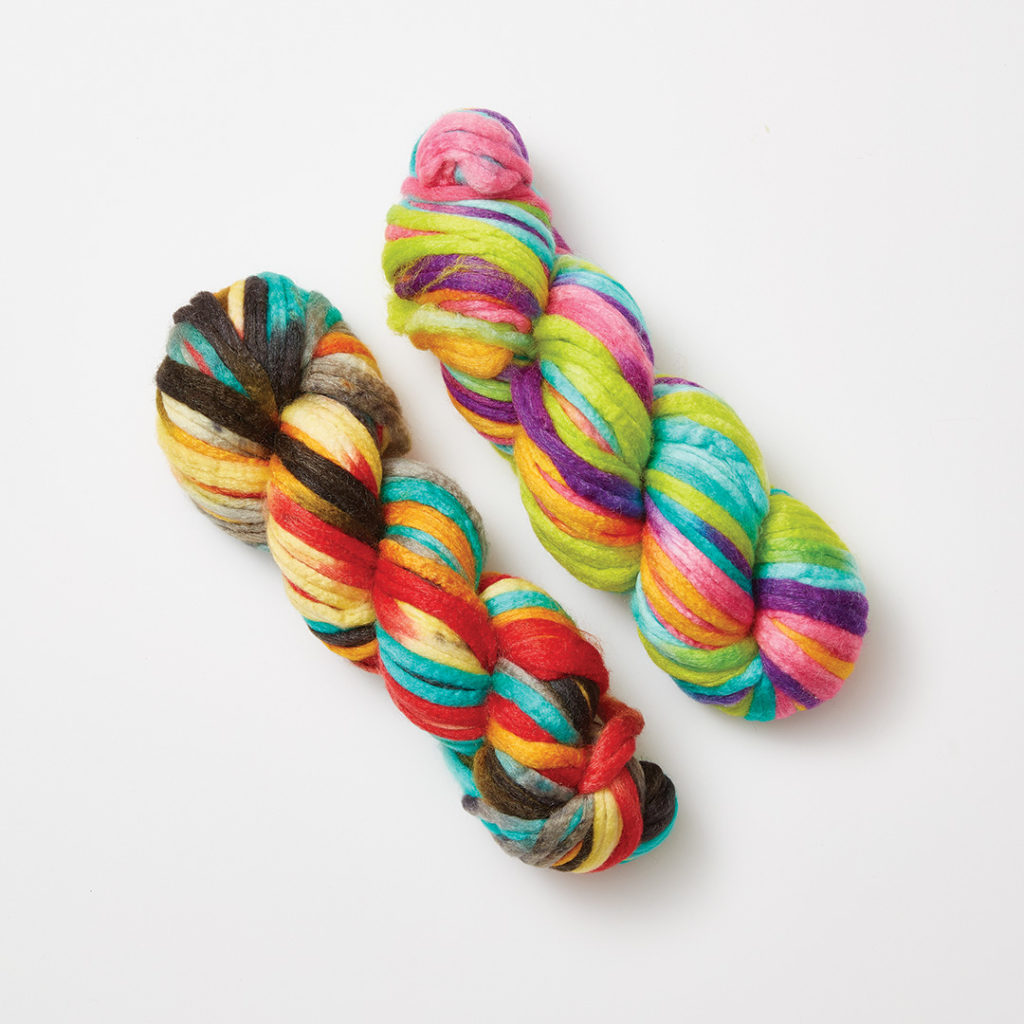January 31, week 3

meet in: Dye Lab, A31 (basement, walk past the Lending window and elevator doors)
quiz 4: History of Dyes
Dye Lab Sign Up will be updated soon; Dye Lab is shared by several classes and students who reserve a table have priority to work in the lab
demo: preparing yarn for dyeing, using the umbrella swift to make hanks/skeins, adding eight figure 8 ties, wetting out the fiber, documenting fiber weight and color dye proportions, dyeing protein fibers with Jacquard acid dyes
dye lab safety and cleanliness policy
assign groups
Homework for February 5
Weaving Sample: follow videos in Weaving Technical Resources: Basics, Surface Embellishments, Creating Shapes and weave additional 10” outside of class (for a total of 16”). Students must complete the following:
*plain weave with one color; heavily beat one section (using fork) to see the difference between balanced weave and weft faced weave (this should have been accomplished in class)
*2 picks + 2 picks, 1 pick + 1 pick
Weaving Plain Weave with Two Shuttles/Colors (2 picks, 2 picks; 1 pick, 1 pick)
*3 rectangles of color with slits
Weaving Three Rectangular Shapes with Slits Between Them
*3 rectangles of color with weft interlock
Weft Interlock – Schacht Spindle
Weft Interlock – weave with pat
Weft Interlock – with Rebecca Mezoff
*practice meet and separate with 3 and 4 colors
Meet and Separate (tail to tail, head to head)
*surface embellishments of choice (choose from Surface Embellishments videos)
*2 found materials woven with plain weave
*practice clasped weft (start at 4:14)
Clasped weft – diamond shape
Homework for February 7
*follow instructions in Technical Learning: Samples: Acid Dyed Yarn
Synthrapol is a speciality, ph neutral detergent; if it is not available in the cabinet, use any dish soap you can find in the dye lab
*bring KITCHEN GLOVES and WEAR OLD CLOTHES THAT CAN GET DIRTY to your dye session
*each group dyes the assigned colors and number of skeins and roving/batting listed in Technical Learning: Samples: Acid Dyed
*dyed fiber must be brought to February 7 class labeled with color recipe and in ball format
*images documenting the process must be pinned to Pinterest by each student
*legible labels with color proportions must be documented with permanent marker on fabric tape or on a separate piece of paper attached to the dyed fiber
*students are expected to work together as a group, NOT individually; students should agree on a plan of action at the start of the session (who will document, who will calculate, who will clean, who will make sure that the floor is not wet, who will make the hanks/skeins, who will put eight figure 8s on the hanks/skeins, who will measure etc)
*pin images of dyed yarn and process on Pinterest
extras:
How Temperature Effects the Acid Dyeing Process
Using Food Dyes to Dye Wool
Adobe Color, great place to explore color combinations
Digital Tool for mixing colors, trycolors.com
Color Theory Basics
How to Not Suck at Color – 5 color theory tips every designer should know
Cochineal Red: The Art History of a Color